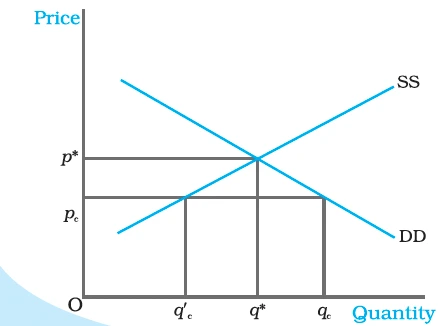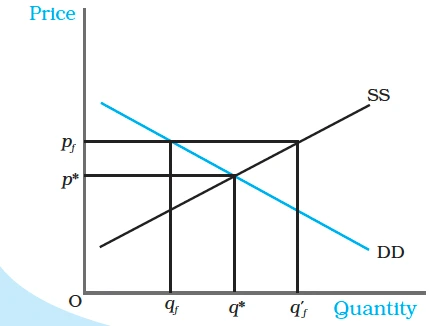![]() December 5, 2023
December 5, 2023
![]() 403
403
![]() 0
0
Governments often step in to regulate prices when they are deemed too high or too low compared to desired levels. These interventions are analyzed within the framework of perfect competition to understand their impact on the affected markets.
|
POINTS TO PONDER The neo-liberal economic policy believes in market fundamentalism. These economists believe that the ‘invisible hand’ is the best and most efficient regulator of the market and demand for state non-intervention. Can you think of the need for the state and a welfare state in a fairly competitive market economy? |
|---|

Effect of Price Ceiling in Wheat Market
The equilibrium price and quantity are p* and q* respectively. Imposition of price ceiling at pc gives rise to excess demand in the wheat market.

Effect of Price Floor on the Market for Goods
The market equilibrium is at (p*, q*). Imposition of price floor at pf gives rise to an excess supply.
|
Key points to remember about market equilibrium in a perfectly competitive market
|
|---|
Conclusion
Glossary
|
|---|
<div class="new-fform">
</div>

Latest Comments